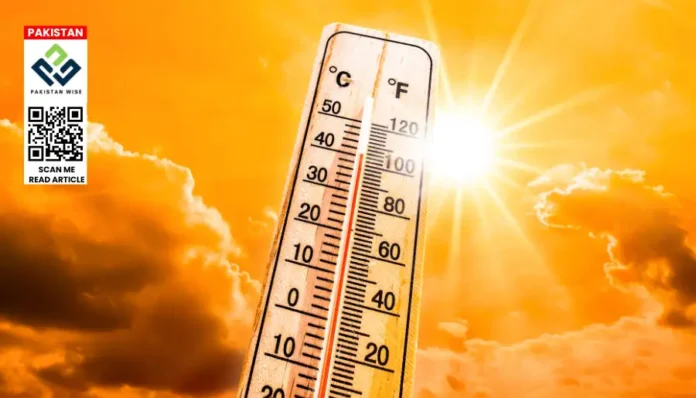- Pakistan is experiencing a severe heatwave, with temperatures soaring 4-7°C above normal across many regions.
- Northern and central areas, including Islamabad and Punjab, will face extreme heat through May 19, while southern regions like Sindh and Balochistan will endure it until May 20.
- Authorities urge people to stay indoors, drink plenty of water, and take safety measures to avoid heat-related illnesses.
Prolonged Heatwave Grips Pakistan, Temperatures Set to Stay High Until May 20
Pakistan is currently battling an intense heatwave that is expected to continue through May 20, affecting large parts of the country. The Pakistan Meteorological Department (PMD) has issued warnings about soaring temperatures that will remain significantly above the usual seasonal averages for several days.
Temperature Rise Across Northern and Central Regions
From May 15 to 19, northern and central Pakistan-including Islamabad, Khyber-Pakhtunkhwa, Punjab, Kashmir, and Gilgit-Baltistan-will experience daytime temperatures that are 5 to 7 degrees Celsius higher than normal. This means that people living in these areas should prepare for unusually hot weather that could impact daily life and health.
Southern Pakistan Faces Extended Heatwave
In the southern parts of the country, such as Sindh, southern Punjab, and Balochistan, the heatwave is expected to last a bit longer, continuing until at least May 20. Temperatures in these regions are forecasted to be 4 to 6 degrees Celsius above average, making the weather extremely uncomfortable, especially in cities like Karachi where humidity levels add to the heat stress.
Causes of the Heatwave
The PMD explains that this heatwave is caused by a combination of persistent dry continental air and a developing high-pressure system in the upper atmosphere. This weather pattern traps hot air over the region, preventing cooling winds or rains from providing relief. As a result, many areas are experiencing dry and scorching conditions.
Current Temperature Records and Forecasts
Over the last 24 hours, several cities have recorded dangerously high temperatures. Dadu topped the list with a scorching 48°C, followed closely by Jacobabad at 47°C. Other cities such as Sibbi, Turbat, Sukkur, Rohri, and Rahim Yar Khan reported temperatures around 45°C.
Looking ahead, Dadu is expected to see temperatures climb even higher, reaching between 47°C and 51°C over the next three days. Meanwhile, Nawabshah, Mithi, and Mohenjo-Daro will likely experience highs ranging from 42°C to 48°C. Karachi, despite its coastal location, will face temperatures near 40°C, with the added challenge of high humidity making the heat feel more intense.
Health Risks and Safety Recommendations
The ongoing heatwave poses serious health risks, including dehydration, heat exhaustion, and heatstroke. The PMD and health authorities have urged residents to take necessary precautions. Key advice includes:
- Avoiding outdoor activities during peak heat hours.
- Drinking plenty of water to stay hydrated.
- Wearing light, loose-fitting clothing.
- Using hats, umbrellas, or other forms of shade when outside.
- Checking on vulnerable individuals such as children, the elderly, and those with chronic illnesses.
Conclusion
Pakistan is currently enduring one of its most intense heat spells of the season, with temperatures far exceeding normal levels across much of the country. The combination of dry air and atmospheric pressure systems is driving this prolonged hot weather, which is expected to continue until at least May 20. By following safety guidelines and staying informed, people can reduce the risks associated with this dangerous heatwave.
Pakistan Wise: “If you live in affected areas, stay safe, keep hydrated, and monitor weather updates regularly to navigate this challenging heatwave period effectively.”

